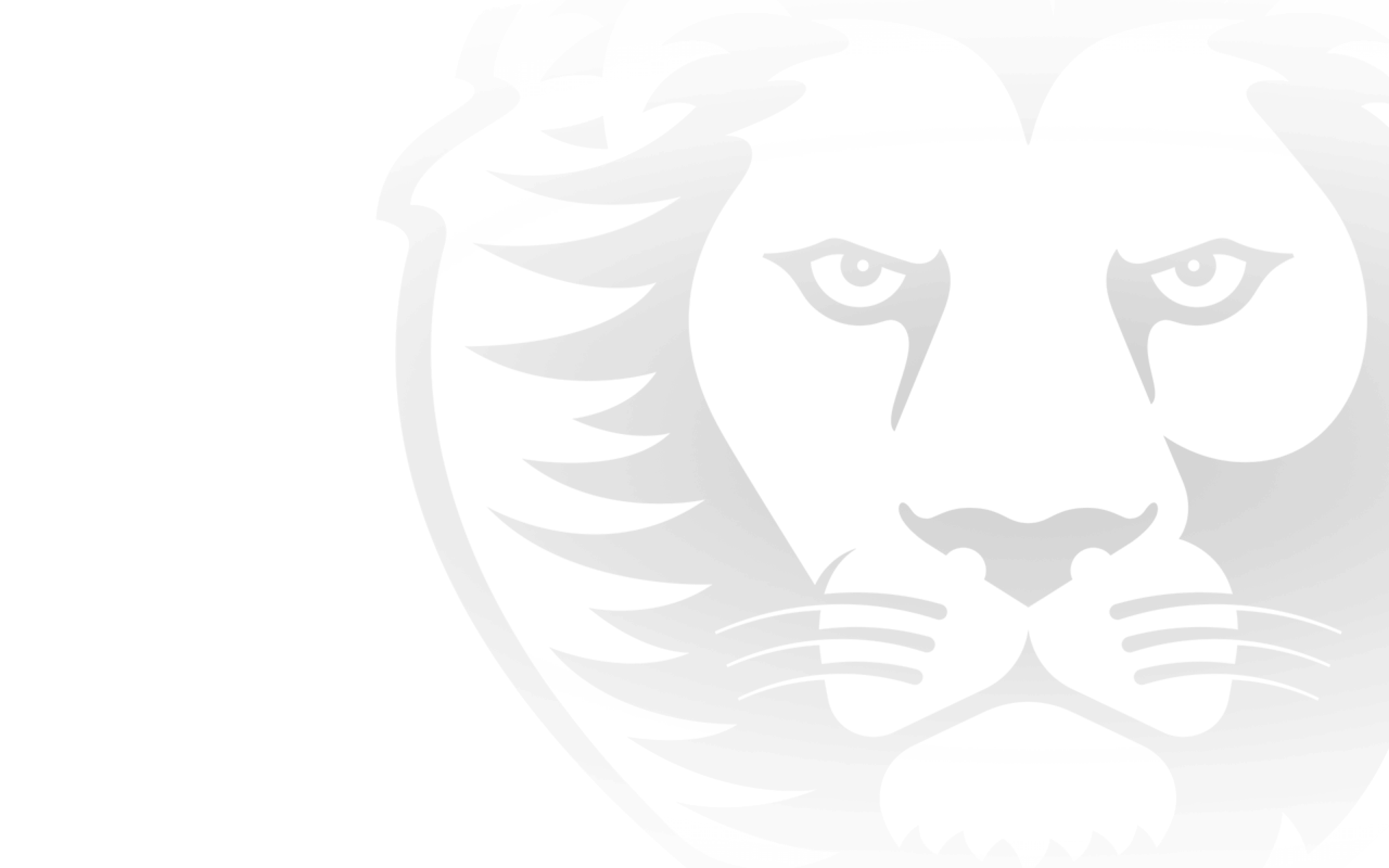Among 1493 players all-time in the combined Brisbane/Fitzroy VFL/AFL ‘family’, five are Indigenous royalty… Sir Douglas Nicholls, Chris Johnson, Darryl White, Michael McLean and Joe Johnson.
Nicholls, a 54-game player with Fitzroy from 1932-37, is known throughout football as the man after whom this weekend’s AFL Indigenous Round is named. He was the first Indigenous Australian to be knighted, and is the only Indigenous Australian appointed to a vice-regal office, having served as Governor of South Australia in 1976-77.
Chris Johnson was a member of the so-called Fitzroy ‘Chosen Eight’ who headed to Brisbane via the merger and won three AFL premierships alongside White, who is Alice Springs’ most famous footballing product.
And McLean, a dual Brisbane Bears club champion and one of the club’s most revered figures, is similarly well-known with Chris Johnson and White as a member of the Brisbane Lions Hall of Fame and the AFL Indigenous Team of the Century.
But Joe Johnson is well-known to only the real students of the game despite being regarded, like Nicholls, as a hero by the modern trio.
Born Joseph Andrew Johnson on 19 January 1883 in Newcastle to Melbourne-born Andrew Johnson and his wife Eliza Catherine Louisa Johnson (nee Gordon), he played 55 of a possible 58 games with Fitzroy from 1904-06 for two premierships and a losing grand final. And he was the first Indigenous player in VFL/AFL history.
As the AFL celebrates Indigenous Round for the 19th time, Johnson is part of a fascinating walk through the most successful period of the Fitzroy Football Club as he went on to also become the AFL’s first Indigenous premiership player. And then the first Indigenous dual premiership player.
A half back flanker recruited from VFA club Northcote who stood all of 168cm tall, Johnson debuted for Fitzroy against Carlton at Princes Park in Round 1 1904 in what 121 years later is remembered as a huge day not just for football but for everyday Australia.
It was seven years before 1899-1905 premiership player Geoff Moriarty became the first Fitzroy coach in 1911 and the game introduced of jumper numbers to identify the players, and part of a long Fitzroy history which officially began when the club was formed in 1883.
The club, then known as the ‘Maroons’, was a foundation member of the old Victorian Football Association in 1877, and, after the introduction of a grand final for the first time in 1888, won the Association’s eighth official premiership in 1895.
In 1897 they split from the VFA with Collingwood, Essendon, Geelong, Melbourne and South Melbourne to establish the Victorian Football League, later inviting Carlton and St.Kilda to join them in a breakaway competition.
After finishing sixth in 1897 Fitzroy would go on to play in seven grand finals in nine years from 1898-1906. They beat Essendon by 15 points in 1898 and South Melbourne by one point in 1899, both at Jolimont Oval, before losing the 1900 grand final by four points to Melbourne at East Melbourne Cricket Ground, and, after the grand final was played at the MCG for the first time in 1902, they lost the 1903 grand final by two points to Collingwood at what became ‘headquarters’.
And then along came Joe Johnson.
His debut at 3pm on Saturday 7 May 1904 against Carlton at Princes Park came in an odd situation. John Worrall, who in 1902 had become the competition’s first official coach, was beginning his third season at the Carlton helm while each of the other clubs were still coach-less. Even more bizarre was the fact that Worrall, a former Test cricketer, had played 90 games in two stints with Fitzroy from 1884-87 and 1889-93.
But still Fitzroy posted a memorable win. Such was the magnitude of their 16-12 (108) to 1-8 (14) drubbing that at the time of the Fitzroy-Brisbane merger the 94-point margin would still be Fitzroy’s biggest win over Carlton in 197 meetings. And Carlton’s total of 14 points was their sixth-lowest all-time against Fitzroy and their lowest against Fitzroy in the last 92 years prior to the merger.
Astonishingly, each of the 18 members of Johnson’s first team would play in at least one Fitzroy premiership. And they combined for 68 grand finals and 37 premierships - a massive slice of the total 237 grand finals and 147 premierships of the 1157-strong Fitzroy playing group.
Among them were Ern Jenkins and Bill McSpeerin, who had played in Fitzroy’s first VFL game against Carlton at Brunswick Street Oval in 1897 and would go on to play in a combined 11 grand finals.
Jenkins, Fitzroy captain in 1906-07, played in six grand finals before coaching Richmond in 1913 and standing as a goal umpire in 132 games and five grand finals from 1920-27. And McSpeerin, a member of the 1895 VFA premiership side and Fitzroy captain in 1901-02, played in five VFL grand finals. They won three flags each, equal with Harry Clarke, who had triumphed in 1898-99, and one more than Fred Fontaine also played in six grand finals but he went one better than Jenkins – he played in a club record four premierships.
Percy Trotter, later chosen in the Fitzroy Team of the Century, played in four grand finals for two premierships with Les Millis, Herbert Milne, Jim Sharp, Bill Walker.
Johnson’s three grand finals for two flags was matched by Wally Naismith and Percy Sheehan, while Edgar Kneen, Alf Sharp and Alf Wilkinson enjoyed two grand finals for one flag, and Alf Bartlett was one for one.
It was a ‘who’s who?’ of the early years of Fitzroy.
But none were more important to the fabric of everyday life in Australia than Johnson, who, with Trotter, Les Millis and Wally Naismith, played in every game in his first season in 1904, when Fitzroy were minor premiers with a 12-5 record and beat third-placed Collingwood by 11 points in the semi-final. And he was named among Fitzroy’s best players in their 9-7 (61) to 5-7 (37) grand final win over Carlton at the MCG.
In 1905 he played 19 of a possible 20 games as Fitzroy finished second on the home-and-away ladder at 12-1-4 behind Collingwood at 15-2. They accounted for fourth-placed Essendon by 43 points in the semi-final and third-placed Carlton by 27 points in the preliminary final before beating Collingwood 4-6 (30) to 2-5 (17) in the grand final.
Still only 22, he’d played 38 games for 29 wins and a draw – and two flags.
In 1906 he played 17 of a possible 19 games as Fitzroy, chasing what would have been the game’s first premiership hat-trick, finished second on the home-and-away ladder at 13-4 a game behind Carlton, and beat Essendon by six goals in the semi-final.
But when went down 6-9 (45) to 15-4 (94) to Carlton in the grand final he was done. Injuries were starting to restrict him, and with a 41-1-13 record from his 55 games overall, and a 6-1 in finals, he retired.
He never lost more than two games in a row, never lost to Melbourne or South Melbourne, and lost only once to St. Kilda and twice to Geelong. And, having played at only eight venues, he had a positive or even record at all but Collingwood’s Victoria Park, where he was 1-2.
He’d been an inspirational figure at Fitzroy, but in many ways his fight had just begun as he accepted a position as captain-coach of VFA side Brunswick.
At the time the VFA was a thriving rival competition to the VFL, and the appointment of an Indigenous captain-coach was a huge social standout. More so when he took Brunswick to their first flag in 1909 before stepping aside.
Exactly how it was received at the time is not properly recorded, but the arrival of Doug Nicholls at Fitzroy in 1932 provides an insight into the sort of treatment Johnson may have received.
As legend has it, Nicholls changed by himself in the dressing room before his early games. He preferred it that way because he believed it was wrong to consider himself his teammates’ equal.
Then, one day Nicholls heard a friendly voice as a teammate moved next to him to get changed.
It was none other than the legendary Haydn Bunton, who had played his 19th game in Nicholls’ debut in Round 1 1932 after winning the Brownlow Medal in his first season at Fitzroy in 1931.
It was overwhelming endorsement from a player who won the Brownlow again in 1932 and 1935 after finishing equal 7th in 1933 and runner-up by a vote in 1934.
Quickly, teammates followed and soon Nicholls’ worries were behind him. He played six years at Fitzroy without further incident.
Johnson had returned to Northcote in 1912 for a three-year stint as captain-coach, was married in August 1912, and in February 1916 he enlisted in the First Australian Imperial Force (AIF) to begin a whole new chapter in his life at 33.
He served in Egypt, where on 1 August 1916 he was court-martialled after a charge of ‘striking his superior officer’. Sentenced to six months imprisonment with hard labour, his incarceration began on 16 August but was suspended on 15 September.
The AIF stationed him in France from November 1916 but in February 1917 he was transferred to the United Kingdom for treatment for ‘acute nephritis’. He returned to Australia five months later and on 18 October of the same year he was discharged on medical grounds.
But the Johnson legacy lived on. His son Percy, who was only three when his father died suddenly aged 51 in April 1934, played 52 games with North Melbourne from 1951-55.
His grandson Percy played five games with Hawthorn in 1964-65 before the family’s football journey spread to a fourth generation via great grandsons Robert and Trent.
Robert Cummings, originally recruited by Hawthorn from SANFL club Central District without playing at senior level, later joined Fitzroy via pick #15 in the 1990 Pre-Season Draft and played one game in 1990. And Trent Cummings, pick #6 in the 1993 National Draft, played 27 games at Fitzroy from 1994-96 before two games at West Coast in 1997.
Joe Johnson, the Cummings brothers and Chris Johnson were among 13 Indigenous players at Fitzroy. Listed in playing number order, they were:
#92 – Joe Johnson
#258 – Norm Byron
#426 – Doug Nicholls
#556 – Shadrack James
#794 – Ted Lovett
#1014 – Kevin Taylor
#1066 – Wally Matera
#1068 – Kevin Caton
#1075 – Dale Kickett
#1079 – Robert Cummings
#1122 – Trent Cummings
#1127 – Chris Johnson
#1142 – Peter Bird
Chris Johnson, White and McLean are three of 24 Indigenous players to have worn the Brisbane jumper, while Chris Johnson and Kevin Caton played for Brisbane and Fitzroy. In Brisbane playing list order, they are:
#161 – Kevin Caton
#177 – Michael McLean
#189 – Matthew AhMat
#195 – Darryl White
#200 – Russell Jeffrey
#203 – Adam Kerinaiua
#209 – Fabian Francis
#222 – Gilbert McAdam
#244 – Chris Johnson
#265 – Des Headland
#269 – Shannon Rusca
#280 – Ash McGrath
#288 – Anthony Corrie
#307 – Rhan Hooper
#310 – Jason Roe
#316 – Albert Proud
#229 – Sam Sheldon
#242 – Xavier Clarke
#282 – Allen Christensen
#310 – Charlie Cameron
#323 – Callum AhChee
#326 – Cam Ellis-Yolmen
#330 – Keidean Coleman
#335 – Nakia Cockatoo
There have been six Indigenous women play in the Brisbane Lions’ AFLW side. They are:
#1 – Ally Anderson
#2 – Kaitlyn Ashmore
#13 - Shaleise Law
#36 - Paige Parker
#44 – Dakota Davidson
#53 - Courtney Hodder


